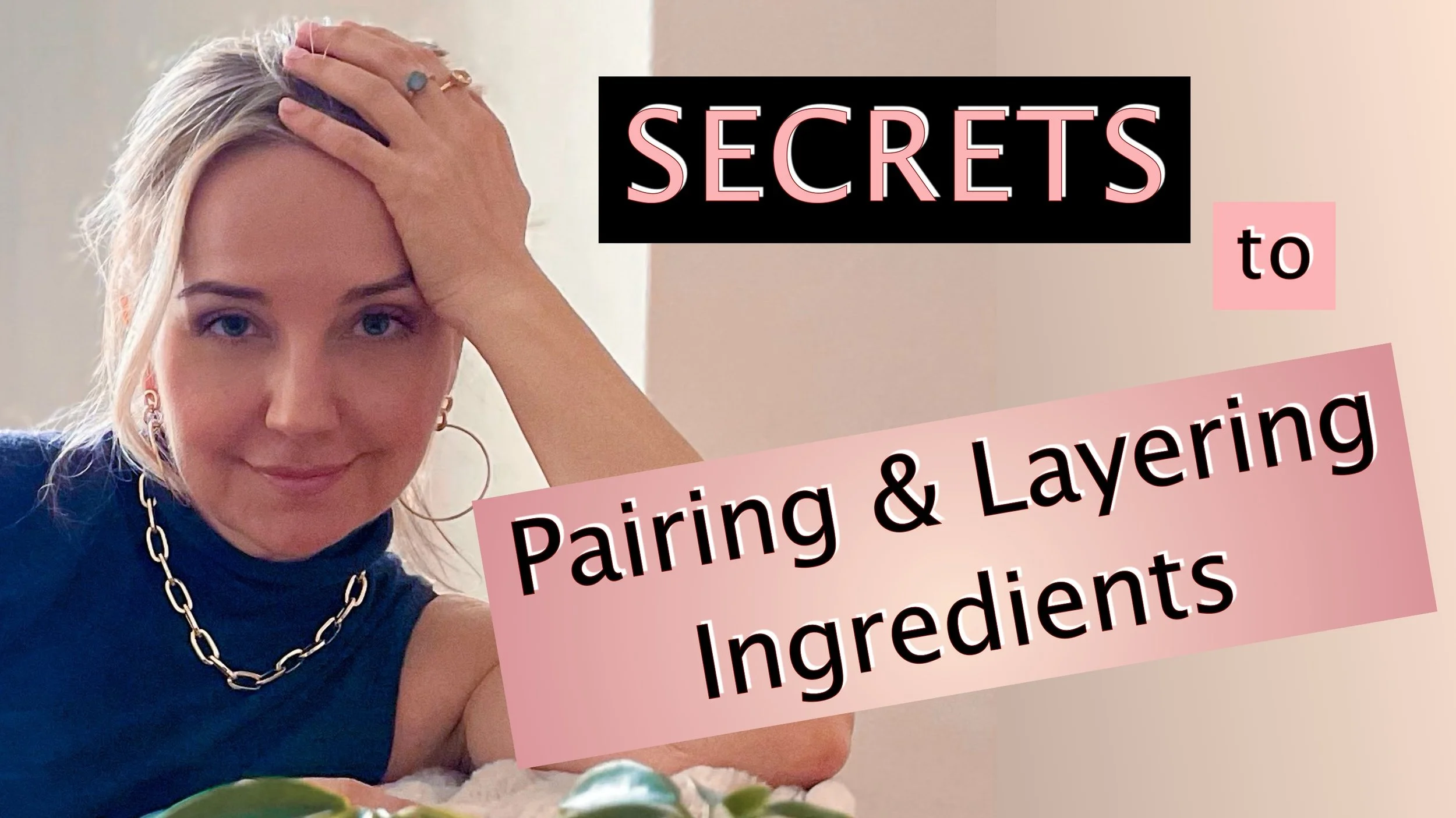The Things You Need to Know Before Putting Together Your Skincare Routine
Often times when we purchase skin care, we are not advised on what ingredients or products will go well together or render ingredients inactive. Which ingredients go well with everything and which ones are picky. Here are the many little caveats, tips or tricks that can help you in optimizing your daily routine.
GOALS: Think about different approaches to achieve the same end result. Consider getting products that target different pathways to achieve the same goal. For example:
Hyperpigmentation: 1. Target tyrosinase inhibition, ( hydroquinone, azelaic acid, arbutin, cyspera, kojic acid, bakuchiol, vitamin C). 2. Reduce pigment transfer (niacinamide, retinol, cyspera) 3. Remove excess pigment (retinoids, AHA’s exfoliation).
Anti-aging: 1. Increase cell turnover to more speedy, youthful cycle. 2. Exfoliation to remove old dead keratinocytes that cause a dull lackluster appearance. 3. Stimulate collagen production. 4. Limit free radical damage, accelerated aging.
Acne: 1. Limit bacterial overgrowth. 2. Balance the keratinization process to reduce pore blockages. 3. Balance oil production while preserving hydration.
FRIENDS AND FOES: The ingredients that enhance or diminish the active properties of other ingredients. *For all intents and purposes, I am not including hyaluronic acid in the acids category because even though the acid is the the HA name, this ingredient is not acidic.
Face wash: A lower pH face wash can lower the pH of the skin, optimizing the absorption of acidic active ingredients like vitamin C in the ascorbic acid form. So washing with AHA or BHA can optimize absorption of acidic serums like L ascorbic acid.
Benzoyl peroxide works by creating free radicals which will deplete antioxidants by using them up, rendering them inactive (or used up). It will deactivate hydroquinone, vitamin C, kojic acid and azelaic acid. It will also degrade many forms of vitamin A. The exception is adapalene, which works well with benzoyl peroxide. Remember, a benzoyl peroxide face wash will have minimal effects compared to a gel that will stay on the skin. Consider spot treating with benzoyl peroxide gel if using any of the above mentioned ingredients.
Salicylic acid will enhance vitamin C penetration but increase irritation with other acids. Also, if you apply face oils and salicylic together, the salicylic will break down the oil you applied and less will get busy breaking down the sebum in the pores.
L-Ascorbic acid & tretinoin: Ascorbic acidic optimal at a low pH, tretinoin likes a neutral pH. Consider using them at different times of day or let one fully dry before applying the second one. You can even apply another product in between.
Mixing is not the same as layering: Combining actives together in a formula is very different from mixing products together in your fingertips. Try avoiding mixing actives unless they are designed to be combined (like some hydroquinone and tretinoin products. Having said that, actives that are formulated together work well together because the formulators take into account the properties of active ingredients when formulating products.
EASY GOING FRIENDS: Ingredients that go well together.
Retinol and bakuchiol go well together. Bakuchiol has skin soothing properties.
Niacinamide is friends with everyone. It is not irritating, (at the right concentration) and can be applied anywhere in a skincare routine.
INVISIBLE INGREDIENTS:
Sometimes sunscreens have many beneficial ingredients other than sunscreen such as antioxidants and niacinamide saving you some money on additional skincare products.
CONCENTRATION MATTERS: More is not better!
Ideal concentration of niacinamide is 3-5%
Azelaic acid works great in lower, non prescription formulations.
L ascorbic acid works optimally at 10-20% in a pH of 3.5 or less
Tretinoin & retinol can be extremely irritating and inflammatory if not introduced slowly and gently so it’s always best to start at the lowest concentration and monitor the skin’s response.
IRRITANTS
Cyspera, hydroquinone, L ascorbic acid or application of multiple acid products can be extremely irritating to the skin. If you would like to apply multiple acids, look for formulations that have many of the ingredients you are interested in.
WATER & OIL
If oil or oily products are applied to the skin before water based ones, they will limit the penetration of the hydrophilic or water loving ingredients, basically acting as a barrier. So watery products should go on first and oily ones last and occlusives extra last.
HYPERPIGMENTATION
exacerbated by irritation/inflammation.
Saturated fatty acids like stearic acid, palmetic acid may increase melanin production.
Unsaturated fatty acids like linoleic acid (borage, evening primrose and canola) , oleic acid (olive, shoe butter) and alpha linoleic acid (flaxseed, canola, walnuts) are safer for hyperpigmentation prone skin. Argan oil contains all three; oleic acid is most abundant, followed by linoleic acid and palmitic acid.
Skin of color can be sensitive to AHA’s - glycolic acid should be kept at a maximum of 5% or less. The safest is mandelic acid.
